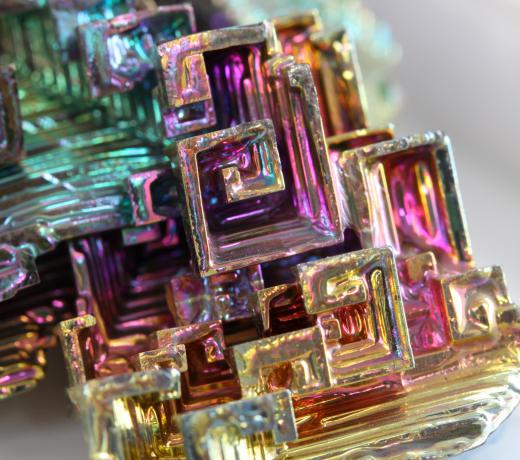What is Roentgenium?
 Mary McMahon
Mary McMahon
Roentgenium is a metallic chemical element classified among the transactinides on the periodic table of elements. This element is one of the heaviest known to man, with an atomic number of 111; it was once known as unununium, a systematic name which is related to its atomic number. Like other transactinide elements, roentgenium does not occur naturally, and it must be synthesized in a linear accelerator, using a costly and time consuming process. No commercial uses have been developed for this element.
Credit for the discovery of roentgenium is given to Peter Armbruster and Gottfried Münzenber, researchers in Darmstadt, Germany. The men produced the element artificially in 1994 by colliding nickel and bismuth in a linear accelerator. Only a handful of atoms were produced, and they were extremely short lived, but they endured long enough to confirm the discovery of the 111th element, which is also classified among the transition metals.

The chemical properties of roentgenium are not fully known, as the element only exists for a brief period of time, making it difficult to conduct observations and experiments. Like other transactinides, roentgenium is extremely unstable and it is also radioactive. Its metallic nature is actually only assumed; scientists also believe that it probably has an orange to yellow cast. As a general rule, isotopes of roentgenium live for only a few seconds.

The name “roentgenium” was approved for this element in 2004. It honors Welhelm Conrad Röntgen, a scientific researcher who is probably best known for his discovery of the x-ray. Given the immense contribution to science that the x-ray represents, the German discoverers of element 111 probably wanted to ensure that the name of its discoverer lived on. You may also see his name anglicized as “Roentgen,” the spelling that was adopted for the name of the element, which is abbreviated as Rg on the periodic table.
Like other synthetically produced elements, roentgenium may have a few surprises to yield. Researchers continue to produce and study the element in the hopes that they can find stable isotopes with longer lives, and perhaps a use for the element may one day be developed.
AS FEATURED ON:
AS FEATURED ON:












Discussion Comments
How heavy would it be?
Post your comments